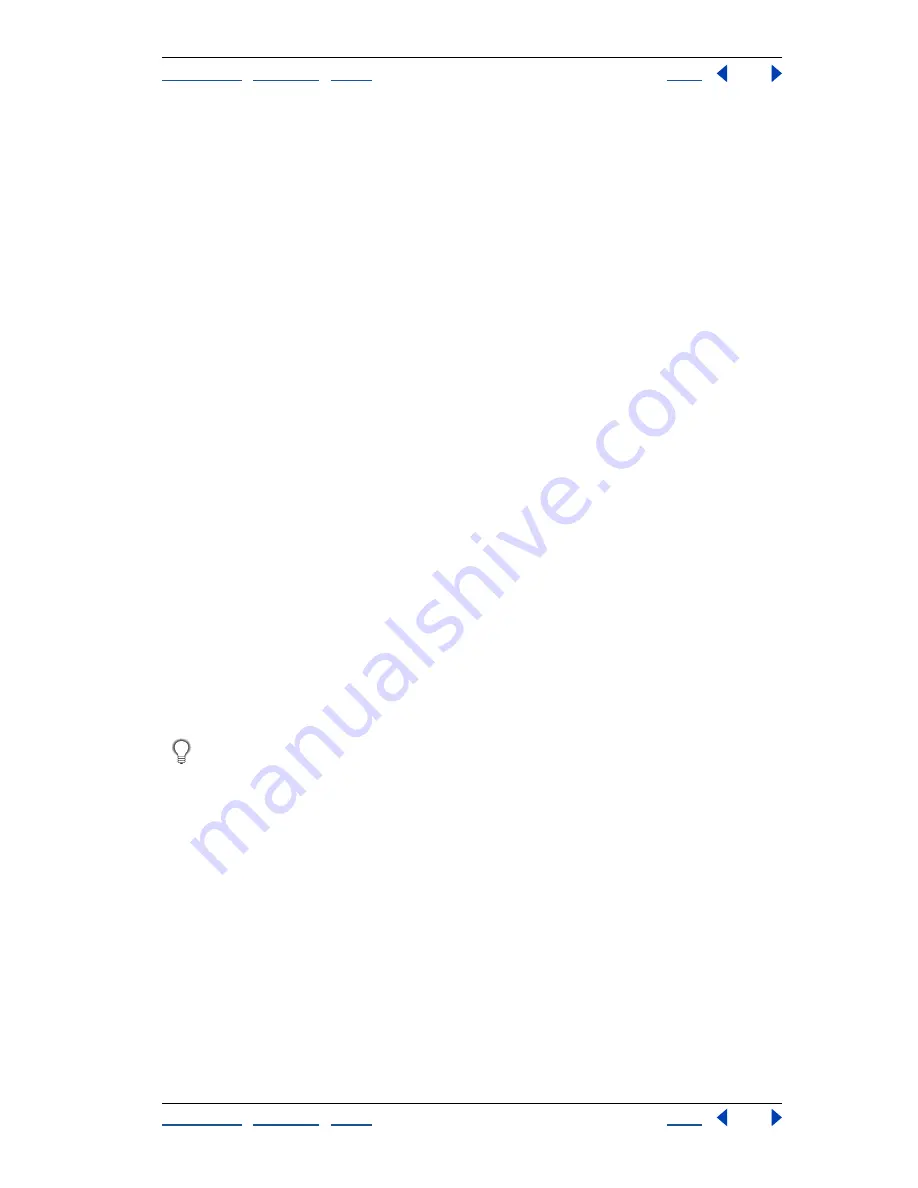
Using Help
|
Contents
|
Index
Back
244
Adobe Illustrator Help
Working with Bitmap Images
Using Help
|
Contents
|
Index
Back
244
Angled Strokes
Repaints an image using diagonal strokes. The lighter areas of the image
are painted in strokes going in one direction while the darker areas are painted in strokes
going the opposite direction.
Crosshatch
Preserves the details and features of the original image while adding texture
and roughening the edges of the colored areas in the image with simulated pencil
hatching. The Strength option controls the number of hatching passes, from 1 to 3.
Dark Strokes
Paints dark areas of an image closer to black with short, tight strokes, and
paints lighter areas of the image with long, white strokes.
Ink Outlines
Redraws an image with fine narrow lines over the original details, in pen-
and-ink style.
Spatter
Replicates the effect of a spatter airbrush. Increasing the options simplifies the
overall effect.
Sprayed Strokes
Repaints an image using its dominant colors with angled, sprayed
strokes of color.
Sumi-e
Paints an image in Japanese style as if with a wet brush full of black ink on rice
paper. The effect is soft blurry edges with rich blacks.
Distort filters and effects
The Distort filters and effects geometrically distort an image, creating 3-D or other
reshaping effects. Note that these filters can be very memory intensive.
Diffuse Glow
Renders an image as though it were viewed through a soft diffusion filter.
The filter adds see-through white noise to an image, with the glow fading from the center
of a selection.
Glass
Makes an image appear as if it is being viewed through different types of glass.You
can choose a glass effect or create your own glass surface as a Photoshop file, and apply it.
You can adjust scaling, distortion, and smoothness settings.
Ocean Ripple
Adds randomly spaced ripples to the images surface, making the image
look as if it were under water.
To replicate wave results on other selections, click Randomize, set the Number of
Generators to 1, and set the minimum and maximum Wavelength and Amplitude
parameters to the same value.
Pixelate filters and effects
The filters or effects in the Pixelate submenu sharply define a selection by clumping pixels
of similar color values in cells.
Color Halftone
Simulates the effect of using an enlarged halftone screen on each
channel of the image. For each channel, the filter divides the image into rectangles and
replaces each rectangle with a circle. The circle size is proportional to the brightness of the
rectangle.
To use the Color Halftone filter:
1
Choose Filter > Pixelate > Color Halftone.
2
Enter a value in pixels for the maximum radius of a halftone dot, from 4 to 127.






























